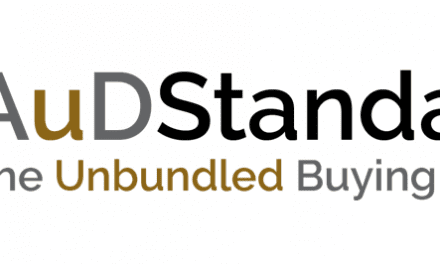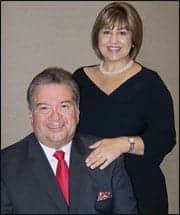The case for Live Speech Mapping as a tool in fitting and counseling.

|
| Terry Ross is vice president of MedRx Inc, Largo, Fla, a worldwide manufacturer of PCbased diagnostic and testing technologies for the hearing care market. Correspondence can be addressed to HR at [email protected] or Terry Ross at . |
There is not a person I know who has not been directly affected by the remarkable gyrations of our volatile economy. Corporations are restructuring, recalibrating, and reacting to the ongoing pressures to bring paying customers into their businesses. For some, it is truly a time of crisis management. For others, it is an opportunity to refocus resources into the most important business activities for the survival of their companies: to pay special attention to the sales agreement process, the education of the customer, and the service after the sale. It is those activities that acquire, maintain, and secure customers (and cash flow) in a softening market.
A Thirst for Knowledge
Today’s consumer is very complex and demanding. We can thank the Internet for virtually unlimited consumer access to information. Today’s Boomer population (born between 1946 and 1964) are coming of age relative to hearing aid use, and the age-50+ population is 77 million people strong and growing daily. These people control 77% of all financial assets, and older adults want to know what your product does, how it works, and why you are better than your competitors. They also have the time to read brochures and product reviews, and keep abreast of facts online.
Fortunately, today there is advanced computerized technology available that assists in obtaining the best “first fit” result with hearing instruments, and also represents a key business tool for educating the buyer and the third party—the spouse, patient’s daughter/son, etc—about your recommended solution. Live Speech Mapping and Hearing Loss Simulator (HLS) technology available from a number of instrumentation manufacturers assists in doing this. For purposes of this discussion, the following article refers to the features offered by the MedRx AVANT REM Speech™ Plus device (Figure 1).

|
| FIGURE 1. MedRx AVANT REM Speech™ Plus |
Third-Party Agreement: A Key to Success
Hearing loss simulators. Endorsement and acknowledgement of the important third party can be critical to the purchasing process and fitting success. One of the most underutilized, yet most powerful tools available today is the Hearing Loss Simulator—a third-party tool that allows the significant other to “experience” the hearing loss and the potential for improvement through amplification. A built-in feature of the AVANT REM Speech Plus device, the Hearing Loss Simulator shows the virtual extent of the hearing loss being experienced, and helps educate the third party about what the patient has been experiencing.
According to Hames and Robinson, “It is well established that setting realistic expectations for the hearing-impaired patient can determine whether or not a hearing aid fitting is successful.”1 A fundamental aspect of the “agreement process” with the patient is achieving a consensus from the third party that there is a hearing loss, and that their partner can benefit from amplification. The same study concluded that a larger percentage of patients decided to move forward with the purchase of hearing devices if the third party was exposed to the hearing loss simulation.
Probe mic monitoring. Another feature of the Speech Plus is the probe microphone monitoring system. This feature allows the third party to listen to the actual hearing instrument while it is being worn by the patient. The significant other and family members can hear adjustments as they are being made by the clinician. This also gives the clinician the ability to demonstrate the most advanced features of the new hearing instrument, justifying the investment. Features such as multiple memories, directional microphones, and noise reduction can be heard and demonstrated to everyone in the room.
In the AVANT REM Speech Plus system, it is possible for the third party to wear an external headset and actually listen to the amplified signals that the patient is experiencing as they are being programmed with their new hearing device(s). With the popularity of the new “On-the-Ear” BTE devices, this is exceptionally powerful, as the patient can leave the same day that they are tested with their new hearing aid devices. Both parties can then experience the improvement immediately in the real world.
The HLS software is capable of audibly comparing normal hearing to the reduced dynamic range of the impaired individual based on their audiogram. It also provides a compelling demonstration of the restorative possibilities with amplification. This demonstration takes only 2 to 3 minutes and can represent a powerful and convincing case for persuading the hearing-impaired person to invest in better hearing.

|
| FIGURE 2. Live unaided speech map showing no audibility above 750 Hz at 65 dB. |
Verification Technology
Adding objectivity to hearing aid fittings. Live Speech Mapping is merely one form of real-ear measurement; it utilizes a familiar live speech stimulus rather than an artificial stimulus to ensure that the hearing device prescribed is achieving optimum performance based on the patient’s reduced dynamic range. By placing a probe tube in the ear canal with the hearing instrument in place, the speech mapping instrumentation can objectively measure the sound pressure level (SPL) of the amplified signal in a specific anatomical space with a specific hearing device. When comparing this measurement to the patient’s increased thresholds and uncomfortable loudness levels (UCL), the clinician can confirm that sounds are either audible or not audible across the frequency range critical to understanding speech (Figure 2). If certain key frequencies are deficient or are overamplified, immediate adjustments can be made and the patient can view the modification results, visually reinforcing the capability of the prescribed device(s).
When the patient observes and experiences this proactive activity, it builds credibility and significantly reduces buying resistance. The Live Speech Map is presented in an easily understood graphic, empowering the patient with a clear “visual” sense of the hearing loss and aided benefits as they relate to actual speech. Live Speech Mapping also provides the clinician with a quick and precise measuring instrument to achieve successful fittings.2
Demonstrating hearing aid features. Utilizing Live Speech Mapping to show the flexibility and features of the particular hearing instrument technology in situ is extremely convincing to the prospective purchaser. With the AVANT REM Speech device, there is an “on-top” software modality, which allows the live map to float on top of any NOAH-compatible fitting software on a single screen. This “live” presentation allows the professional to confirm to the patient that the hearing device is processing sound properly for their hearing loss. Professionals using this verification protocol can ensure soft sounds are audible, speech is comfortable, and loud sounds don’t exceed the patient’s tolerance level. Additionally, the many sound management systems of the hearing aid can be visually shown to the patient, justifying their investment.
Another Stimulus Package
The challenges of our weakened economy are creating opportunities for hearing care businesses to better focus on providing meaningful experiences for today’s savvy consumers and their significant others. Ensuring survival and growth today requires attention to the entire customer and third-party experience. Utilizing effective speech mapping technology maximizes the impact of your skills and services where the rubber meets the road. This “stimulus package” is the most meaningful way to demonstrate the advanced capabilities of the prescribed products.
References
- Hames M, Robinson J. Counseling the significant other. Hear Jour. 2004;57(3):44-48.
- Poe G, Poe M. Straight talk on Live Speech Mapping feedback. Advance Audiol. 2002;13(3):26-29.
Citation for this article:
Ross T. Live speech mapping: a stimulus package for hearing health care. Hearing Review. 2009;6(6):36-38.





